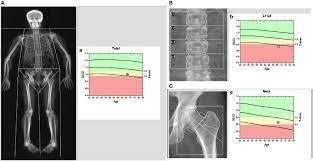ADH release from the posterior pituitary is stimulated by which process?
Low blood pressure sensed by baroreceptors in the kidneys.
Low osmolality sensed by osmoreceptors in the kidneys.
High plasma osmolarity sensed by osmoreceptors in the hypothalamus.
High concentration of potassium sensed by chemoreceptors in the carotid body.
The Correct Answer is C
Choice A rationale: Low blood pressure sensed by baroreceptors in the kidneys would stimulate the renin-angiotensin-aldosterone system, which regulates blood pressure and sodium balance.
Choice B rationale: Low osmolality sensed by osmoreceptors in the kidneys would
indicate that the body has excess water and needs to excrete it, which would inhibit ADH release.
Choice C rationale: ADH, or antidiuretic hormone, is a peptide hormone that regulates the water balance in the body. It is released from the posterior pituitary gland in response to signals from the hypothalamus. When the plasma osmolarity, or the concentration of solutes in the blood, is high, it means that the body is dehydrated and needs to conserve water. The osmoreceptors in the hypothalamus detect this change and stimulate the release of ADH, which acts on the kidneys to increase water
reabsorption and decrease urine output. This helps to lower the plasma osmolarity and restore the water balance.
Choice D rationale: High concentration of potassium sensed by chemoreceptors in the carotid body would affect the acid-base balance and respiratory rate, but not ADH
release.
Nursing Test Bank
Naxlex Comprehensive Predictor Exams
Related Questions
Correct Answer is A
Explanation
Choice A rationale: The Tensilon test involves injecting edrophonium, and in myasthenia gravis, temporary improvement in muscle strength confirms the diagnosis by demonstrating increased acetylcholine activity at the neuromuscular junction.
Choice B rationale: This describes the pathophysiology of myasthenia gravis but doesn’t directly confirm the diagnosis via the Tensilon test.
Choice C rationale: While this may be seen in myasthenia gravis, the Tensilon test specifically aims to observe improved muscle strength after administration.
Choice D rationale: While the presence of these antibodies is a characteristic of myasthenia gravis, the Tensilon test is used to assess the immediate response to the medication for diagnostic confirmation.
Correct Answer is B
Explanation
Choice A rationale: This test is not specific for confirming osteoporosis.
Choice B rationale: This test is called a bone mineral density (BMD) test or a dual-energy X-ray absorptiometry (DXA) scan. It measures how much calcium and other minerals are in a segment of bone.
Choice C rationale: This test is not specific for confirming osteoporosis.
Choice D rationale: This test is not specific for confirming osteoporosis.

Whether you are a student looking to ace your exams or a practicing nurse seeking to enhance your expertise , our nursing education contents will empower you with the confidence and competence to make a difference in the lives of patients and become a respected leader in the healthcare field.
Visit Naxlex, invest in your future and unlock endless possibilities with our unparalleled nursing education contents today
Report Wrong Answer on the Current Question
Do you disagree with the answer? If yes, what is your expected answer? Explain.
Kindly be descriptive with the issue you are facing.
